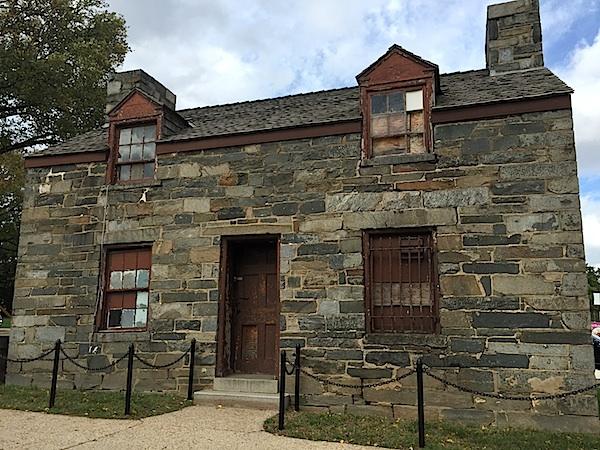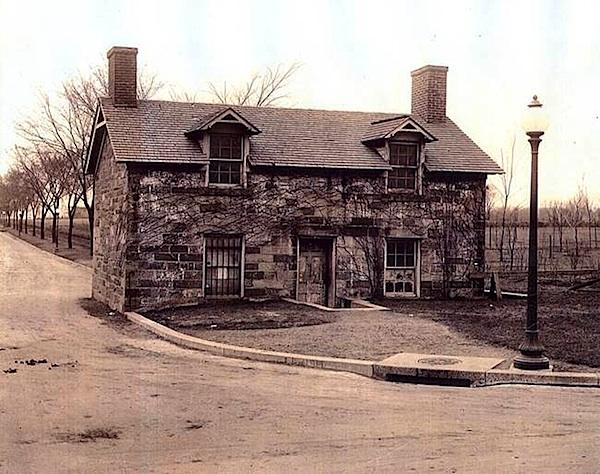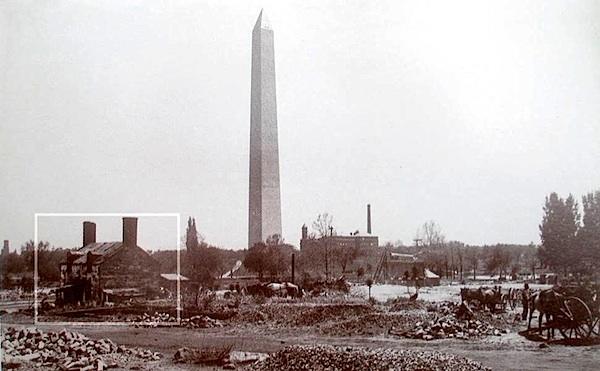
The present-day lockkeeper's house/Trust for the National Mall
A throwback to the days when commerce flowed up and down canals to Washington, D.C., a Lockkeeper's House that dates to the 1830s, will be restored to near-mint condition thanks to a $1 million grant from American Express to the Trust for the National Mall.
Located practically in the shadow of the Washington Monument, and not far from the World War II Memorial, the stone building has fallen into a serious state of disrepair and has been closed to the public for four decades.
According to the Trust, City planner Pierre Charles L'Enfant proposed building the Washington City Canal in 1790, counting on it to help develop local businesses and turn the District of Columbia into a prosperous commercial center. After opening in 1815, the canal ran alongside what is today Constitution Avenue, carrying boats filled with goods and people between the Potomac and Anacostia Rivers.
A series of locks controlled the movement of the canal and a lockkeeper, in charge of operating the lock of the Washington City Canal ' the last lock before entering the Potomac ' lived in the small stone house between 1835 and 1873. The lockkeeper also collected the tolls and kept records of commerce on the canal, which served as the major thoroughfare until the rise of the railroads in the 19th century
But in 1872, the canal was filled in and the Lockkeeper's House was relocated a bit out of the way to allow for street construction.
As part of the grant funding from American Express, the Lockkeeper's House will be lifted and moved back approximately 32 feet, away from the road and heavy street traffic. Then the hard work will begin, as extensive interior and exterior restoration work will get under way. Crews will install energy-efficient mechanical, electrical, plumbing, and HVAC systems, making the Lockkeeper's House the first site on the National Mall to incorporate the latest technology and materials to ensure environmental sustainability.

The lockkeeper's house, circa 1909/National Archives
The restoration also will allow the Lockkeeper's House to function as a much-needed educational space for the 29 million annual visitors to the National Mall and serve as a gateway to Constitution Gardens, which itself is undergoing extensive restoration thanks to the Trust.
'Historic places, like the Lockkeeper's House, help us unlock our rich cultural and commercial past,' Timothy J. McClimon, president of the American Express Foundation, said Tuesday in presenting the check to Trust President Caroline Cunningham. 'We are proud to join the Trust for the National Mall and the National Park Service to preserve the Lockkeeper's House and create a space for future generations to learn and grow from our country's history.'
Ms. Cunningham said the grant "is a great example of how public-private partnerships can successfully preserve our national landmarks. This often overlooked historic building is on one of the most prominent corners in America's most-visited national park. Now thanks to the generosity of American Express, the Lockkeeper's House will have yet another life as a gateway to one of the most visited areas of the National Mall, and a visible reminder of the Capital City's past.'
Built as both a home and workplace, the Lockkeeper's House served the lock that connected the Washington branch of the Chesapeake & Ohio (C&O) Canal and Washington City Canal that ran parallel to where the National Mall is now. When the Chesapeake & Ohio Canal was replaced by railways and the canals were filled, the Lockkeeper's House was no longer needed. The building was further isolated from the Potomac River at the turn of the century during a reclamation project that created Potomac Park, the site of the Lincoln Memorial and Reflecting Pool.
In 1902, ownership of the house was transferred to the Army Corps of Engineers, who used the building as a watchman's house and tool shed. More recently, the National Park Service used it at various times as a storage facility and as a location for public restrooms. In the 1970s, the building was closed to the public and fell into a state of disrepair.
American Express' gift is the latest donation to the two-phased revitalization of Constitution Gardens ' a 38-acre site between the World War II Memorial and the Vietnam Veterans Memorial that is home to several restoration projects, including the Lockkeeper's House, a poorly functioning lake and a shaded, but stunted natural landscape.




Comments
I grew up in Northern VA and lived there most of my life. I've literally driven past this building hundreds of times on my way to work, on visits to the Mall, and on staycations escorting out of town guests around the Capitol area. I think I might have even leaned on it a couple of times looking for shade on hot summer days. And yet I never knew what it was other than just a building sitting at 17th & Constitution. And I had no inkling that a canal ever ran through the city. So far as I was aware the only local canal penetrated no further than into Georgetown. Amazing! A canal actually paralleled Constitution Ave!
Thanks for the history lesson. I now have a new reason to go visit the Mall - which, by the way, when I was growing up there was just the Mall, not the National Mall. I like the change in name though. It's so much more than simply a local attraction; it physically anchors official Washington and plays host to a myriad of themes and monuments central to our National epoch. It cannot lay claim to being a natural treasure the likes of Yosemite or Yellowstone but it's certainly a National Treasure and one that every American should attempt to see at least once before they die.